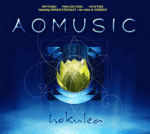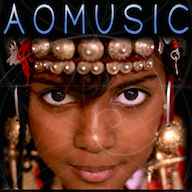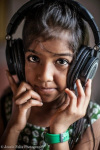 In her timeless anthem, “The Greatest Love Of All,” the late great Whitney Houston sang: “I believe the children are our future. Teach them well and let them lead the way.” The members of AOMUSIC obviously believe that too, and the group’s latest efforts take their commitment to new levels. In addition to their stunning new album Hokulea, they are thrilled to announce the official establishment of their non-profit organization
In her timeless anthem, “The Greatest Love Of All,” the late great Whitney Houston sang: “I believe the children are our future. Teach them well and let them lead the way.” The members of AOMUSIC obviously believe that too, and the group’s latest efforts take their commitment to new levels. In addition to their stunning new album Hokulea, they are thrilled to announce the official establishment of their non-profit organization
AO Foundation International, enabling it to focus on serving the needs of underprivileged children on a global scale. The non-profit’s short term goal, as phrased by AOMUSIC, is to put under one umbrella some very well-organized and efficient grassroots causes for children. Long term, they strive to bring sustenance and opportunity to a billion underprivileged children around the planet, seeing the children themselves as our vital link to a sustainable future. It was exciting to hear of the official confirmation of their non-profit foundation, as I know this is something they have been working on for a long time to bring to fruition. One thing this means is that all proceeds go to children in need around the globe.
It was equally exciting to receive their new album, having been totally inspired by their previous award-winning release, And Love Rages On, which I wrote about in Music and Media Focus. That feature article contains a lot of background information about the group and their creative process, so rather than duplicating it all here, I’ll refer readers to that article. But briefly, AOMUSIC is composed of three primary  members: Richard Gannaway (stringed instruments and vocals), Jay Oliver (keyboards and synth samples), and Miram Stockley (vocals) who is best known as the voice of the group Adiemus. An important supporting member of the production team is Sandeep Chowta, a highly acclaimed film score composer/producer from Mumbai, India. Aside from their work with AOMUSIC, the list of major artists they have collectively worked with is impressive, and includes Sheryl Crow, The Eagles, Bonnie Raitt, Celine Dion, Freddie Mercury, Chaka Kahn, Jimmy Buffett, Chick Corea, and many more. From the nucleus of their trio, they branch out to a worldwide network of collaborators. One of the key features of their music is the inclusion of children’s choirs from around the world. Since they travel to far flung locations to record them, producing an AOMUSIC album is a long and involved process – but so worth waiting for! Incidentally, the word “AO” [e’i-o] comes from the ancient Polynesian language and means “pure light” or “all colors.” As I wrote in my previous review of their music: “This second meaning is particularly descriptive as the music is a virtual rainbow of sound and soul.”
members: Richard Gannaway (stringed instruments and vocals), Jay Oliver (keyboards and synth samples), and Miram Stockley (vocals) who is best known as the voice of the group Adiemus. An important supporting member of the production team is Sandeep Chowta, a highly acclaimed film score composer/producer from Mumbai, India. Aside from their work with AOMUSIC, the list of major artists they have collectively worked with is impressive, and includes Sheryl Crow, The Eagles, Bonnie Raitt, Celine Dion, Freddie Mercury, Chaka Kahn, Jimmy Buffett, Chick Corea, and many more. From the nucleus of their trio, they branch out to a worldwide network of collaborators. One of the key features of their music is the inclusion of children’s choirs from around the world. Since they travel to far flung locations to record them, producing an AOMUSIC album is a long and involved process – but so worth waiting for! Incidentally, the word “AO” [e’i-o] comes from the ancient Polynesian language and means “pure light” or “all colors.” As I wrote in my previous review of their music: “This second meaning is particularly descriptive as the music is a virtual rainbow of sound and soul.”
And just as a rainbow follows a storm, the album kicks off with the thunder of powerful drumming that propels the song with high velocity and sets the stage for the pan-cultural journey to unfold. In contrast to this earthy primal beat are Miriam’s ethereal Enya-like vocals that float above the rushing rhythmic current. Yet another interesting element is the children’s choir, which when it comes in, lifts the song like a great bird taking flight. If I were to use one word to describe the feeling of this song, “Kuimba,” it would be “joyous” – truly a celebration of life. This celebratory spirit flows right into the next song, the title track, which comes from a Polynesian word that translates as “Star of Gladness.” The lighter bell-like percussive tones of Indonesian gamelan open another musical doorway, which is further adorned by airy flute. The electronically processed vocals on this song are sung in English, unlike the Swahili lyrics of the first track. While a variety of languages are represented on the album, some songs are also sung in “vocalese” – made-up phonetics, crafted to inspire one’s own interpretation.
 The complexity and production of this album is astounding and it stirs my imagination to think about what went into creating these songs. Vocalist Miriam Stockley cites a tune called “Sisi ni Moja” as a favorite piece particularly for its level of difficulty. In her words: “I gravitate toward ‘Sisi ni Moja’ from a musical point of view; the timing is complex, and we worked very, very hard to make it sound simple, which really is the hardest thing to do. I think we succeeded, and that is gratifying in the end.” Additionally, AOMUSIC founder Richard Gannaway shares that “each track was indeed its own journey,” and he believes that “fans will respond to the album’s bolder ethnic sound.” Richard’s contributions on guitars and a variety of stringed instruments, while sometimes subtle in such a huge sonic mix, are a primary component of their sound. And speaking of the magnitude of the mix, the production, keyboards, and electronics of Jay Oliver are masterful, to say the least, providing a bit of contemporary context to ancient rhythms and cultural elements.
The complexity and production of this album is astounding and it stirs my imagination to think about what went into creating these songs. Vocalist Miriam Stockley cites a tune called “Sisi ni Moja” as a favorite piece particularly for its level of difficulty. In her words: “I gravitate toward ‘Sisi ni Moja’ from a musical point of view; the timing is complex, and we worked very, very hard to make it sound simple, which really is the hardest thing to do. I think we succeeded, and that is gratifying in the end.” Additionally, AOMUSIC founder Richard Gannaway shares that “each track was indeed its own journey,” and he believes that “fans will respond to the album’s bolder ethnic sound.” Richard’s contributions on guitars and a variety of stringed instruments, while sometimes subtle in such a huge sonic mix, are a primary component of their sound. And speaking of the magnitude of the mix, the production, keyboards, and electronics of Jay Oliver are masterful, to say the least, providing a bit of contemporary context to ancient rhythms and cultural elements.
One of my favorite tracks was a more instrumentally-focused piece entitled “Edge Walkers,” that feature Richard playing a bouzouki – a track he describes as having a “mysterious feel.” After experiencing the world music flavors of Africa, the Far East, Pacific Islands, and more, I was surprised and intrigued when the album took a Celtic turn on a lively tune called “Irie Grá Medley.” However, I shouldn’t have been too surprised having read in the liner notes that one of the two new children’s choirs on the project is from Western Ireland (the other being from Nepal.) The album ends with an exotic composition entitled “O Re Piya,” which is sung in Hindi as a prayer of devotion to the Divine Source. The focus of this song underscores the idea that while there are widely diverse cultural elements in AOMUSIC, there is a universality that is found in the connection we all share with Life itself.
 This article could easily be five times the length in trying to describe the detail and nuance of this incredible music. But to paraphrase the old saying that “a picture is worth a thousand words,” I will say: “a listen is worth a thousand words.” However, a way to combine both pictures and sounds is on a number of beautiful and moving music videos that can be seen at their website and on YouTube. AOMUSIC is truly one of the most unique groups I have encountered in my 30 years as a music journalist. Not only is their music in a class by itself, but the humanitarian work they are doing is a shining example of what can manifest when art and Spirit combine with heartfelt dedication. I have ultimate respect for their commitment to uplift children through music, and with their foundation’s goals to empower them with skills to improve their futures.
This article could easily be five times the length in trying to describe the detail and nuance of this incredible music. But to paraphrase the old saying that “a picture is worth a thousand words,” I will say: “a listen is worth a thousand words.” However, a way to combine both pictures and sounds is on a number of beautiful and moving music videos that can be seen at their website and on YouTube. AOMUSIC is truly one of the most unique groups I have encountered in my 30 years as a music journalist. Not only is their music in a class by itself, but the humanitarian work they are doing is a shining example of what can manifest when art and Spirit combine with heartfelt dedication. I have ultimate respect for their commitment to uplift children through music, and with their foundation’s goals to empower them with skills to improve their futures.
On a related note, I wanted to mention that Richard Gannaway is also an accomplished metaphysical author, and I had the pleasure of writing about his book Drops and Sparks here on this site.


